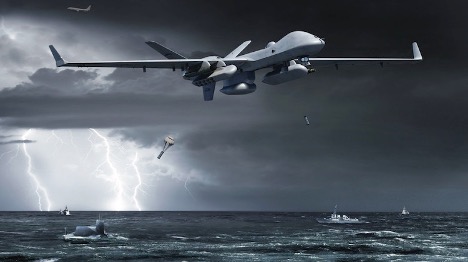SeaGuardian Demonstrates Sonobuoy Capability
General Atomics Aeronautical Systems (GA-ASI) and the US Navy have successfully demonstrated the ability of a Predator B-type unmanned system to employ sonobuoys and process signals from them in a test over California’s Pacific test ranges.
DefenseNews reports that during the November 2020 demonstration, an MQ-9A Block V Reaper UAS employed 10 sonobuoys, and then received sensor data from the sonobuoys on its General Dynamics UYS-505 acoustic processing software and transmitted it to a facility in Arizona.
The demonstration is part of the development of the MQ-9B SeaGuardian, an evolved Reaper which will be integrated with a maritime surveillance radar as well as other sensors and certified systems developed for the MQ-9B SkyGuardian UAS.
“This demonstration is a first for airborne ASW,” General Atomics Aeronautical Systems President David Alexander said in a statement. “The successful completion of this testing paves the way for future development of more Anti-Submarine Warfare capabilities from our MQ-9s.
“We look forward to continuing collaboration with the US Navy as they explore innovative options for distributed maritime operations in the undersea domain.”
The SkyGuardian has been ordered by the UK as the RG Mk.1 Protector, by Belgium, and has been selected by the RAAF to fulfil its Project AIR 7003 armed UAS requirement.
General Atomics is developing wing pods able to carry up to 40 ‘A class’ or 80 ‘G class’ sonobuoys, giving it a true anti-submarine surveillance capability to complement larger and more expensive manned platforms such as the P-8A Poseidon and unmanned MQ-4C Triton systems.
This article was written by Andrew McLaughlin and published by ADBR on January 21, 2021.

